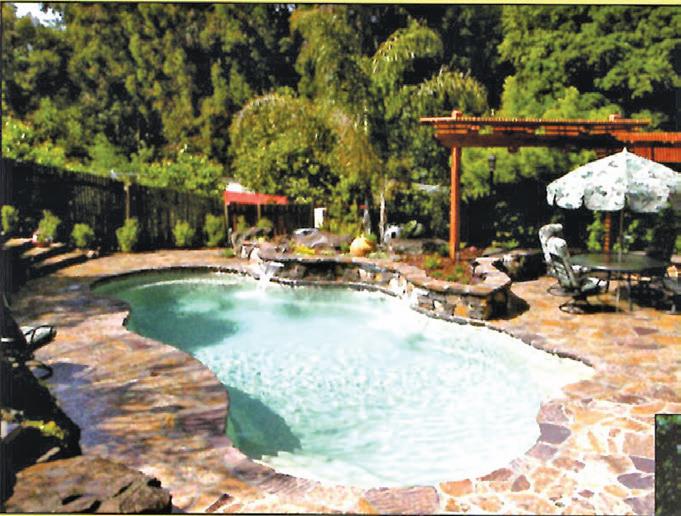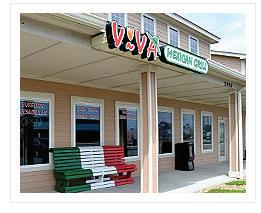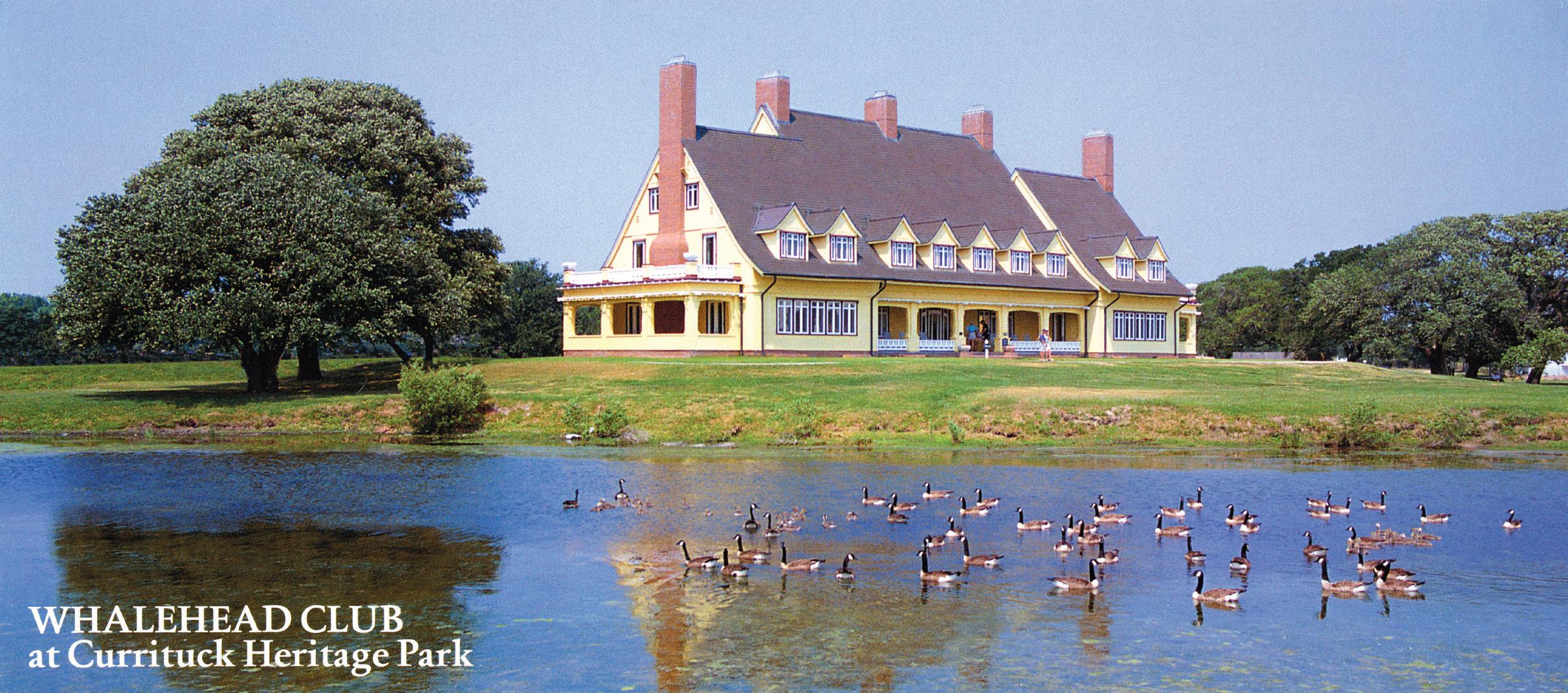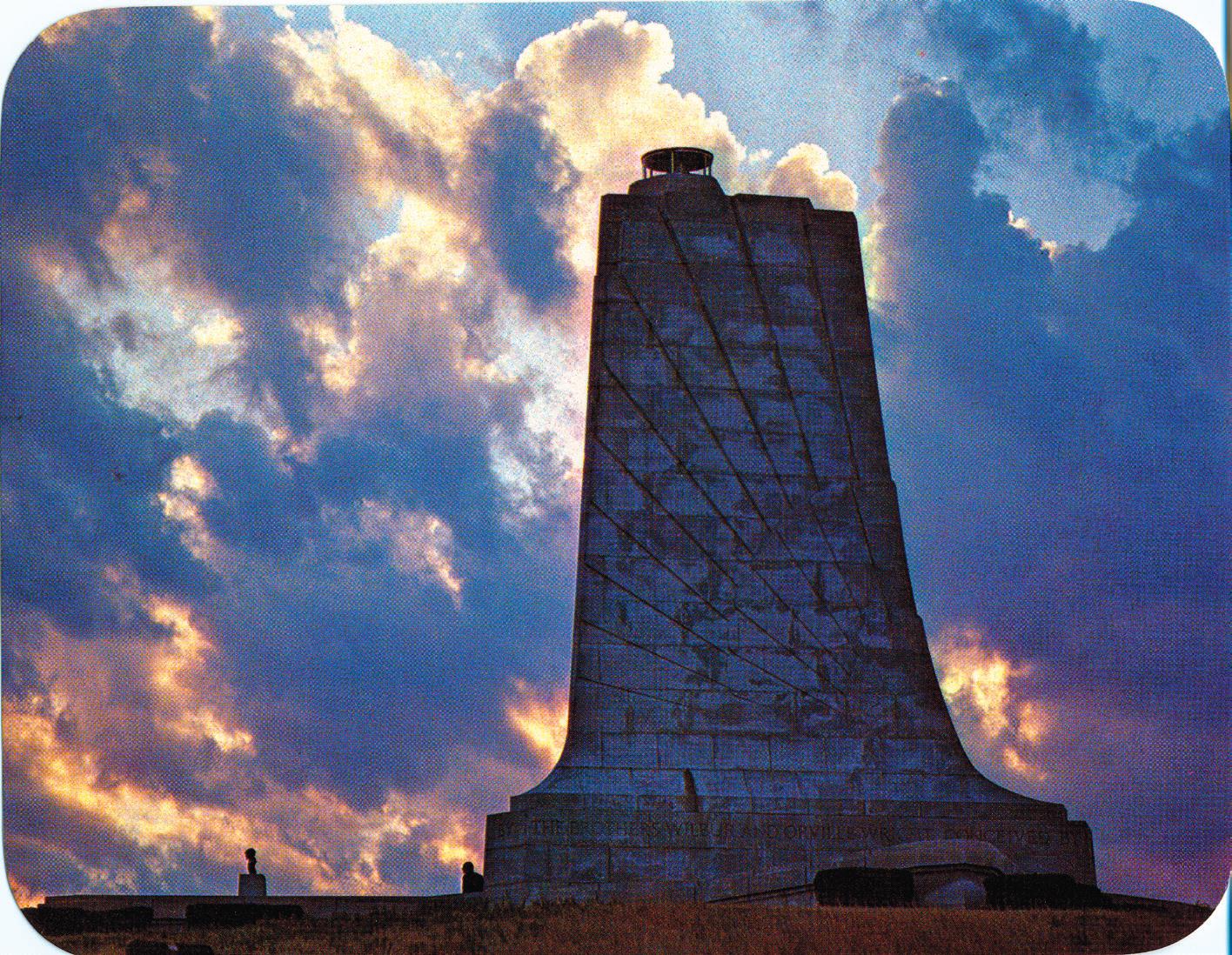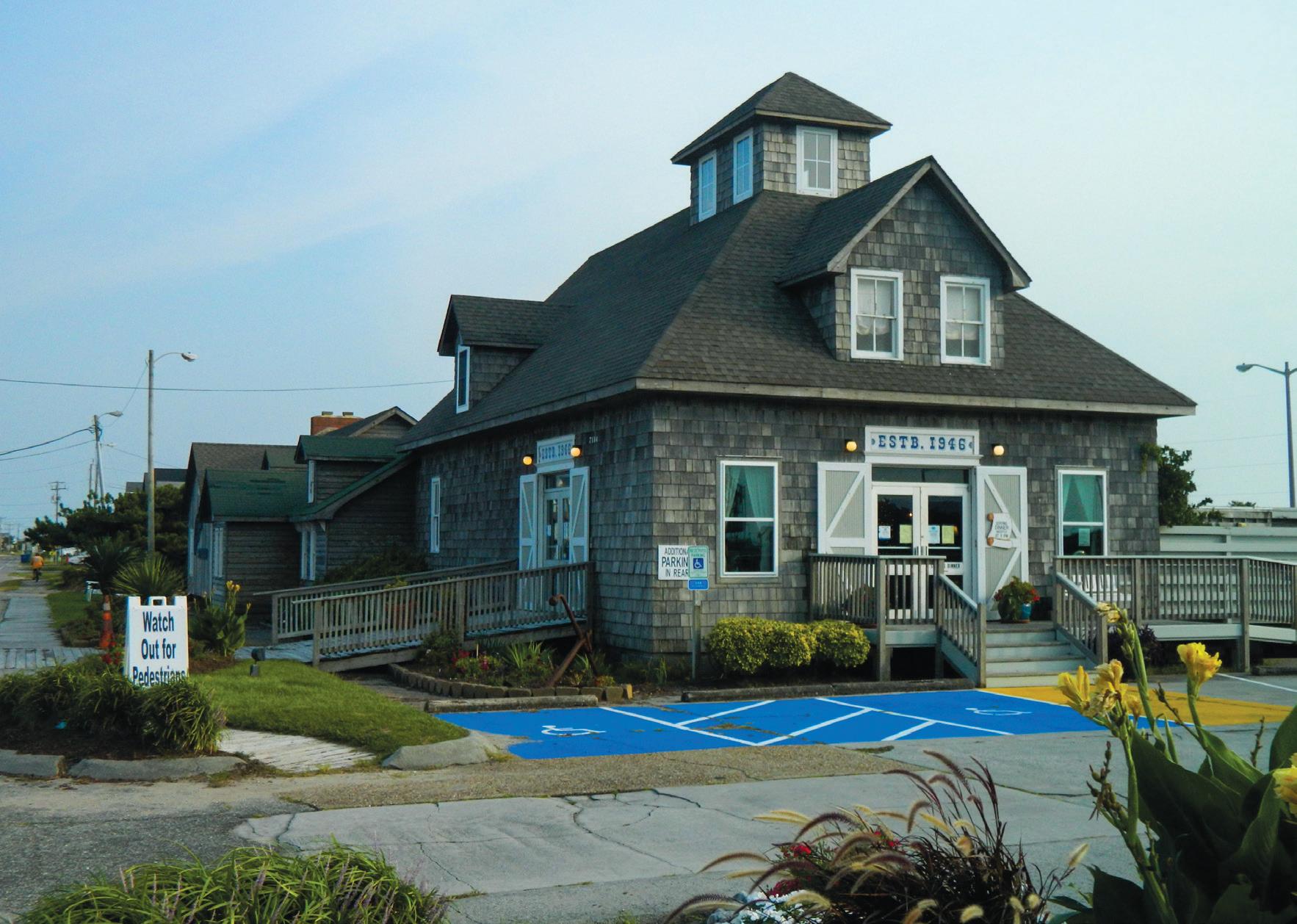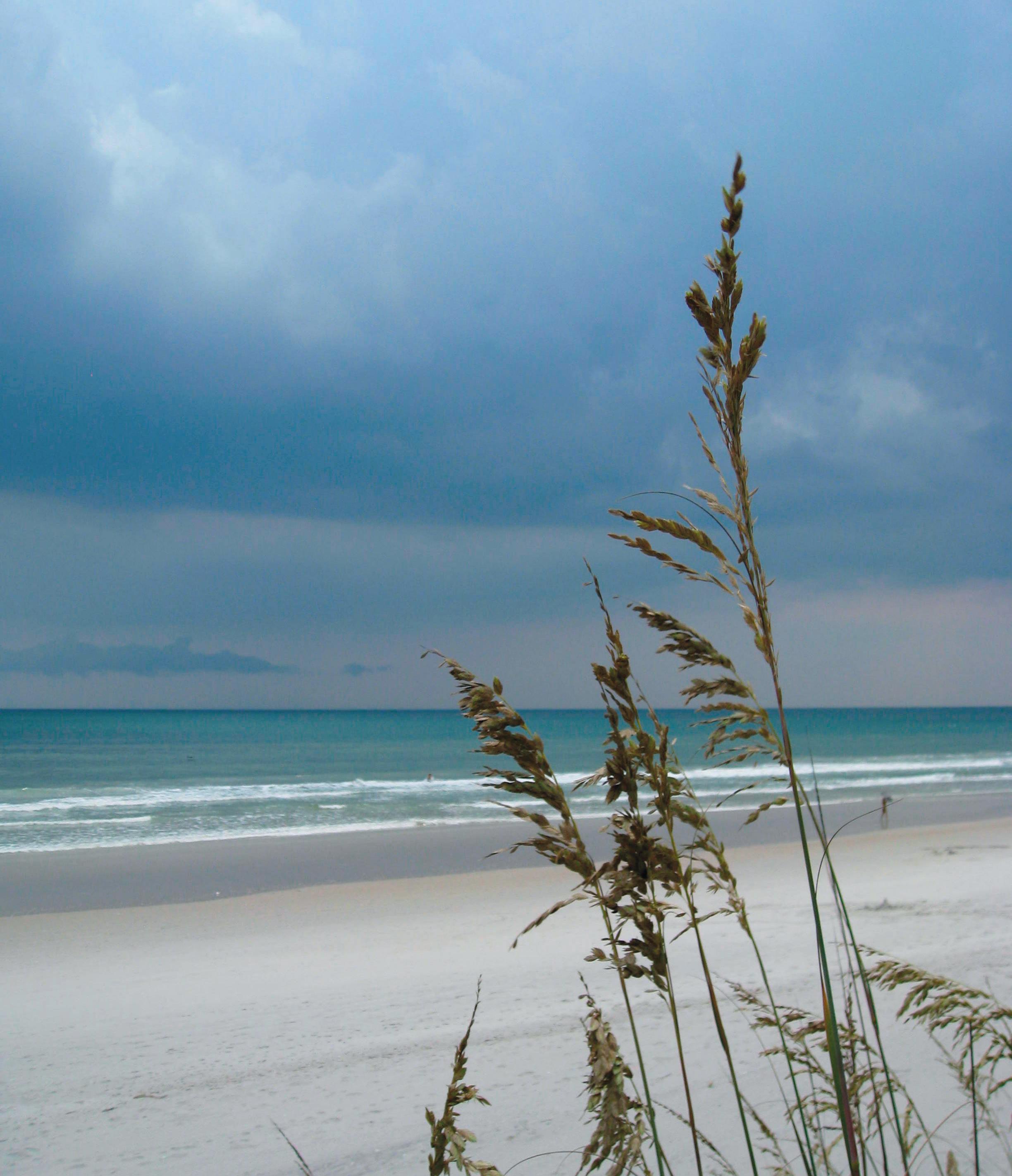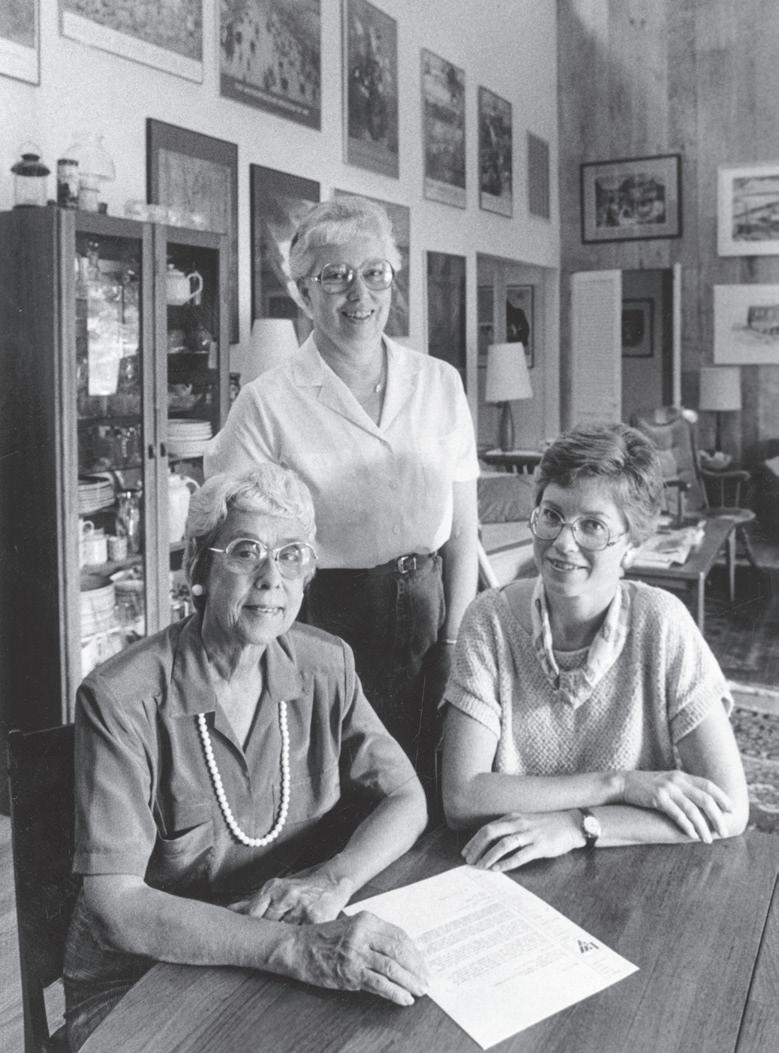
12 minute read
A snapshot of Dare County’s history
Dare County was founded February 3, 1870 by Act of the General Assembly.
In 1870 Dare County was populated with 2,778 people. This year, 150 years later, Dare County has a population of over 35,000 residents. The county has created a website, dare150.com, full of information and photos to showcase the area’s rich history.
Cape Hatteras Lighthouse Lit – 1870
The Cape Hatteras Lighthouse was first lit on December 16, 1870. Built as a replacement for the 1803 lighthouse that had fallen into disrepair, the new lighthouse was installed with the same Frensel lens used in the original lighthouse.
Bodie Island Lighthouse Lit – 1872
The Bodie Island Lighthouse, actually the third lighthouse by that name, was lit on October 1, 1872. It was built as a replacement for the second Bodie Island Lighthouse which was destroyed during the Civil War. At a cost of $140,000, work
began in November 1871. The two previous lighthouses were located south of Oregon Inlet.
Chicamacomico Life-Saving Station – 1874
In 1874, the station was the first United States Life-Saving Station built in North Carolina. On Aug. 16, 1918 the British ship Mirlo was torpedoed by the German submarine U-117. Captain John Allen Midgett of the Chicamacomico Life-Saving Station and his men rushed to the rescue fighting through 18-20 ft breakers to reach the 51 men on the Mirlo. Two lifeboats from the ship escaped the flaming water surrounding the tanker, but the third had capsized. Fighting through the flames, Capt. Midgett found the lifeboat and pulled six men from the ocean. Four more trips total through the breakers and they rescued 42 of the 51 crew onboard the Mirlo.

Little Kinnakeet Life-Saving Station Built – 1874
Wright Brothers National Memorial photo
Little Kinnakeet Life-Saving Station was constructed in 1874, one of seven stations built along the North Carolina coast that year.
Kill Devil Hills Life-Saving Station Built – 1878
Built in 1878, the Kill Devil Hills original life-saving station was home to local surfmen who responded to numerous shipwrecks along the coast. While not on duty, the surfmen also aided the Wright Brothers. In 1986, the building was moved to Historic Corolla Village and restored.
Pea Island Life-Saving Station Built – 1878
Built in 1878, the Pea Island LSS was the first station commanded by an AfricanAmerican, Captain Richard Etheridge. In 1896, a severe storm blew the E.S. Newman bound for Virginia, 100 miles off course and ashore two miles south of the station. Etheridge and his crew, anchored to shore by two strong surfmen Etheridge had tied together, entered the perilous waters on a surfboat ten times. They rescued all nine aboard the E.S. Newman and the first and only all black life-saving crew was awarded the Gold Lifesaving Medal by the Coast Guard. The station burned down in 1880 and was rebuilt that year and then rebuilt again in 1896.
Buffalo City Mills – 1888
Buffalo City Mills, a timber and mill com pany from Buffalo, NY purchased more than 100,000 acres on the Dare County mainland and set up operations. They logged prized hardwoods like juniper and in its heyday was the largest timber company in Eastern North Carolina. As the lumber industry began to dry up, Buffalo City turned to bootlegging liquor. North Carolina was a dry state before and after prohibition from 1908-1937 and Buffalo City saw the advantage of this. The rye whiskey they made was known up and down the east coast as East Lake whiskey. It was so popular, rivals copied the label to
up their sales. When prohibition ended, the people of Buffalo City slowly moved away for better opportunities.
Town of Manteo Incorporates – 1899
Already named the seat of government for Dare County, the community of Manteo incorporated in 1899. Manteo became Dare County’s first municipality when Mayor William G. Forbes and six town commissioners signed the charter and made it official.
First Official U.S. Weather Bureau Station – 1901
The U.S. Department of Agriculture determined that a two-story frame and brick building be built for the Weather Bureau in Hatteras village. Though construction was completed in 1901, the official Hatteras Weather Bureau Station was commissioned and occupied on January 1, 1902.
Fessenden’s First Radio Transmission – 1902
In March of 1902, Reginald A. Fessenden successfully transmitted and received the human voice with devices he created, send ing a 127-word voice message from a transmitter tower at Cape Hatteras to a receiving tower on Roanoke Island (the contents of the message are unknown).
First Flight – 1903
On Dec. 17, 1903, Orville and Wilbur Wright made the first flight in a powered airplane. “The Flyer” flew 120 feet in 12 seconds followed by three more successful flights later that day, the longest of which was 852 feet in 59 seconds.
Dare County Courthouse – 1904
The courthouse was built in 1873 along the waterfront. Then, in 1904, it was moved across the street and given a new fire-proof brick façade. Today the building still sits on this site and is home to the Dare County Arts Council.
Washington Baum Bridge Built – 1928
In 1928, a draw bridge connecting Nags Head and Roanoke Island was built. Leading the push to connect the two was Washington Franklin Baum, a Dare County commissioner.
Wright Memorial Bridge Opens – 1930
The Wright Memorial Bridge opened to the public on September 27, connect ing mainland Currituck to Kitty Hawk over the Currituck Sound. The original bridge featured a wooden span with an arch at the east end declaring Dare County the Birthplace of Aviation and the Birthplace of the Nation.
Hwy 158 Completed – 1931
Once the state highway through Kitty Hawk and Nags Head beaches was completed, it was possible to drive from Point Harbor on the Currituck mainland to Manteo or Wanchese over modern bridges and highways.
Wright Brothers National Memorial – 1931
Groundbreaking on the Wright Brothers National Memorial happened in 1931. The monument was erected in 1931 and 1932 at a cost of $285,000. It was constructed of Mt. Airy granite under the direction of U.S. Army Engineers. The monument is sunk thirty-five feet into the hill and rises sixty-one feet above it. Originally designed as a lighthouse, it was not used for that pur pose after it was discovered that mariners confused it with existing lighthouses. It was taken over by National Park Service in 1933.

Dare County Library Opens – 1935
On March 14, 1935, the Dare County Library opened to the public. Located above a business in downtown Manteo, the Manteo Woman’s Club donated 14 books to start a library. By the 50s, the library had several thousand books and purchased its first bookmobile. Today, the bookmobile no longer exists but the Dare County Library has three branches and belongs to the East Albemarle Regional Library System.
The Lost Colony Play Opened – 1937
The Lost Colony is the nation’s longest running outdoor drama. Written by Pulitzer Prize winner Paul Green, it has run every year since 1937 at Waterside Theatre on Roanoke Island. In 2013, the production won a Tony Honor for Excellence in the Theatre.
Downtown Manteo Fire – 1939
September 11, 1939, a fire broke out at Standard Oil Company in downtown Manteo. Around three hours later with the aid of firefighters from Elizabeth City and Norfolk, Va., the fire was put out. But not before it raged through over half of down town’s closely erected wooden structures.
Dare County Regional Airport – 1942
Since 1942, Dare County has been served by a small airport. A public airport was under construction at the time of the attack on Pearl Harbor, which prompted the U.S. Navy to abandon its plans to con
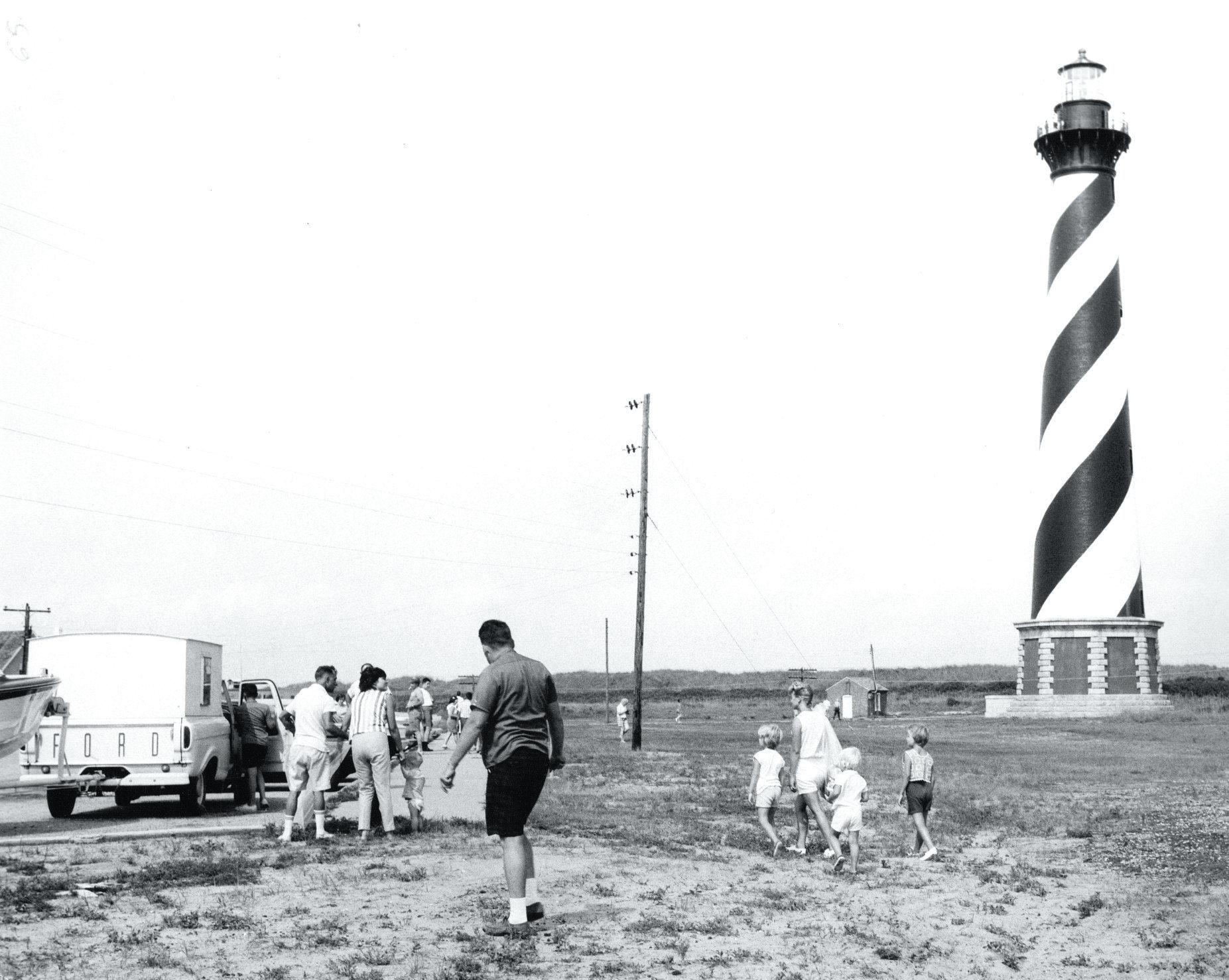
CAPE HATTERAS NATIONAL SEASHORE PHOTO
Families visiting the grounds of the Cape Hatteras Lighthouse in the 1950s.
struct a Naval Auxiliary Air Station at Cape Hatteras and instead focus on this airport, on Roanoke Island, which had a similar runway configuration.
Cape Hatteras National Seashore Established – 1953
In 1933 Frank Stick, conservationist and artist, published an article about his dream of seeing land in Cape Hatteras become a National Park for all to enjoy. In 1937, the plan was approved by the federal government. Stick convinced Henry Phipps, partner in Carnegie Steel Company, to donate his land of over 1,000 acres to the state to avoid paying taxes on it and thus began the long process of establishing the national seashore. In 1953, twenty years after Stick first proposed it, enough land, roads and infrastructure were gathered to establish the Cape Hatteras National Seashore and open it to the public.
Town of Kill Devil Hills Incorporated – 1953
As the story goes, rum strong enough to kill the devil washed up on shore and locals stashed the rum in the dunes. And, that’s how the Town of Kill Devil Hills got its name. The name traces back to the early 1800s but the town wasn’t incorporated until 1953.
William B. Umstead Memorial Bridge Built – 1955
In 1955 the William B. Umstead Memorial Bridge was built, connecting mainland Dare County Manns Harbor to the north end of Roanoke Island. Umstead was a North Carolina senator and the state’s 63rd governor.
Lindsay C. Warren Bridge Built – 1960
The Lindsay C. Warren Bridge, also known as the Alligator River Bridge, was built in 1960 and carries US 64 over the Alligator River. The draw bridge connects mainland Dare County with its inland neigh bor Tyrrell County.
Town of Nags Head Incorporated – 1961
Though some were lost and some added throughout the years, the strip of old cottages known as Cottage Row have much remained the same since Nags Head incorporated in 1961.
Ash Wednesday Storm – 1962
In 1962 the Ash Wednesday Storm pummeled the Outer Banks as well as most of the east coast. For three days and five high tides, wind and waves wreaked havoc on the Outer Banks, becoming one of the top ten worst storms in the United States, according to the U.S. Geological Survey.
Dedication of Herbert C. Bonner Bridge – 1964
The Herbert C. Bonner Bridge spanned Oregon Inlet from Bodie Island to Pea Island for 57 years from 1963 to 2019. In 1964, the bridge was dedicated to Herbert C. Bonner, who for almost 25 years repre sented North Carolina’s First Congressional District. The bridge is no longer in service, but a portion of it will remain for use as a fishing pier. The debris from the Bonner bridge is enhancing three artificial reefs north of the inlet.
COA Offers First Dare County Classes – 1969
In 1969, College of the Albemarle began offering Dare County classes in bor rowed facilities. In 1984, the college’s first satellite campus opened in Manteo.

Jockey’s Ridge State Park Established – 1975
In 1973, after Carolista Baum planted herself in front of the machinery about to begin a development at the base of Jockey’s Ridge and halting its work, the People To Preserve Jockey’s Ridge was organized. Appealing to the government and backed by a petition, the people asked that Jockey’s Ridge be named a State Park. One year later it was declared a National Natural Landmark. And one year after that in 1975, the NC General Assembly found the funds to create Jockey’s Ridge State Park.
Town of Southern Shores Incorporated – 1979
Originally considered part of Kitty Hawk, the Southern Shores resort incorporated in to the Town of Southern Shores in 1979.
Wanchese Marine Industrial Park – 1981
In 1981, the Wanchese Marine Industrial Park opened in order to promote and offer business opportunities that were marinerelated. The complex has businesses rang ing from marinas, commercial fishing, charter boats and boat building. In 2015, the park had an annual impact to the State of North Carolina of $105 million dollars.
Town of Kitty Hawk Incorporated – 1981
The area was referred to as Kitty Hawk in the middle to late 1700s, but made famous by the Wright Brothers in 1903. It wasn’t until 1981 that Kitty Hawk incorporated into the Town of Kitty Hawk.
Elizabeth II Unveiled – 1987
August 18, 1987 marked what would have been the 400th birthday of Virginia Dare, the first English child born in the Americas. The Elizabeth II was constructed as part of that celebration and was mod eled after the ship the settlers would have sailed on to Roanoke Island.
Cape Hatteras Lighthouse Move – 1999
On July 9, 1999, the Cape Hatteras Lighthouse was placed on its new foundation, 2,900 feet from its original location.
Virginia Dare Memorial Bridge Built – 2002
In 2002, the Virginia Dare Memorial Bridge was built, adding a second route connecting mainland Dare County to Roanoke Island.
Town of Duck Incorporated – 2002
Residents of the village of Duck voted to incorporate on November 6, 2001. Out of the 410 registered voters, 113 ballots were cast against incorporating and 171 ballots in favor of incorporation. Duck officially became a municipality on May 1, 2002.
First Beach Nourishment Project – 2011
In 2011, Nags Head began the county’s first beach nourishment project. The proj ect spanned 10 miles and added up to 4.6 million cubic yards of sand to the beaches
in south Nags Head down to the Cape Hatteras National Seashore boundary.
The Coastal Studies Institute – 2012
In 2012, the multi-institutional Coastal Studies Institute was completed. The institute is now a part of East Carolina University with collaboration from NC State, UNC Chapel Hill and Elizabeth City State.

Flat Top Cottage Tours Begin – 2013
In 2013, tours of the historic Southern Shores flat top cottages began as a way to bring attention to and preserve them. Originally built by artist Frank Stick after World War II, the homes can become historical landmarks if their owners so choose. Less than half of the original 80 flattops Stick built still stand today.
Marc Basnight Oregon Inlet Bridge Built – 2019
On February 25, 2019, the Marc Basnight Bridge over Oregon Inlet was opened to the public. The new bridge replaced the Herber C. Bonner Bridge.
Subscribe to The Coastland Times e-edition $ 4 per month Full digital version of the print edition! No pop-up ads on the web edition! No Google Surveys on the web edition! Check thecoastlandtimes.com for details

